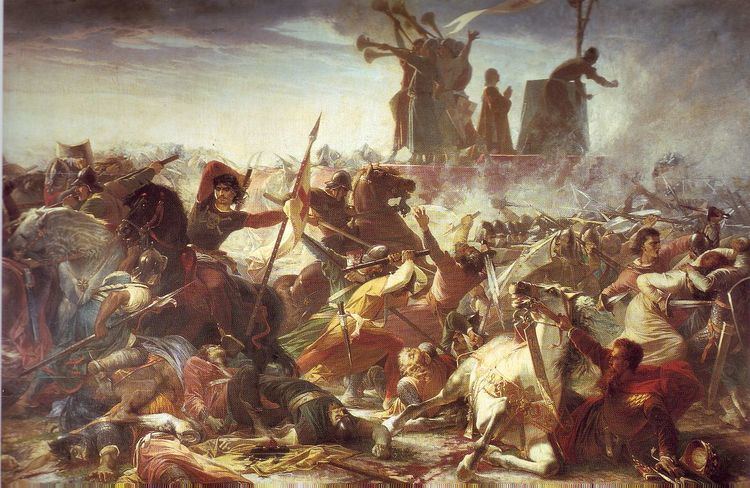 | ||
Necrophageon in company of death stereo
The Company of Death is the name used in the historical literature of English language for two related chosen tactical corps, two selected bands of warriors, entrusted to guarantee the cohesiveness and efficiency in battle of both the Milanese and Lombard League's militias through their bound by oath to the defence of the Milanese Carroccio, the wagon on which the standard of the Lombard allies stood.
Contents
- Necrophageon in company of death stereo
- Necrophageon original in company of death
- The Chronicles
- The Company of the Carroccio
- The Knights of Death
- References
They fought in the Battle of Legnano (29 May 1176) against the imperial army of Frederick I Barbarossa Emperor of the Holy Roman Empire, in his 5th Italian Campaign, and were determinant in his decisive defeat.
The two corps who formed the Company of Death were the Company of the Carroccio, an infantry unit of 300 men, and the real and effective Company of Death, a cavalry unit of 900 men, commanded according to tradition by Alberto da Giussano.
Necrophageon original in company of death
The Chronicles
The mention of the "battle wagons" is very probably an anachronism, they were employed, without any success, years before the Battle of Legnano of 1176 took place, by a Mastro Guitelmo a milanese Guild-master and magistrate in a previous battle fought in the lands between Rho and Legnano in 1160 AD. It is possible that the chronicler was mixing facts as their effective use at Legnano isn't mentioned elsewhere, it may also be a rhetorical device intended by him to recreate the appearance of the traditional trinitarian model of a "Holy Venture".
The Company of the Carroccio
The Company of the Carroccio, was an infantry unit of 300 men, all of them young volunteers (forming a societas) and Milanese, sworn by oath to die in defence of the Milanese Carroccio. They fought as phalanx in a Sheltron formation around their "Sacred wagon", armed with a large shield and a lanzalonga.
The Knights of Death
The Company of Death, also known in some sources till the late 19th century as the Knights of Death, is the name of a temporary military association of medieval knights (a temporary societas), not historically well documented, which according to tradition was organized and equipped by a leader known as Alberto da Giussano. It had a great importance during the Battle of Legnano (29 May 1176) where it defended the Carroccio of the Lombard League against the imperial army of Frederick I Barbarossa.
The company was assembled in haste, depriving the Lombard infantry of the valuable support of enough heavy cavalry, "horse" were recruited by Alberto da Giussano around Brescia, and in other eastern areas of Lombardy that had contributed less in infantry and trails to the League. The knights would not be understood in the medieval and romantic sense, but as mere "mounted on horseback" or also "light cavalry". They were very probably particularly cruel and fierce "professional, or semi-professional, fighters", apt at wreaking havoc in the enemy ranks.
According to Milanese chronicler Galvano Fiamma it was composed of 900 men at arms but other sources and modern scholars reduce that number to 300 or, more probably, 500.
According to tradition they wore a sort of dark suit (black and gray, cut vertically) connected at the sides, to cover the armour, with probably the symbol of the skull on the traditional small pointed wooden shields.
After the battle there is no further information about the company's continued existence.
